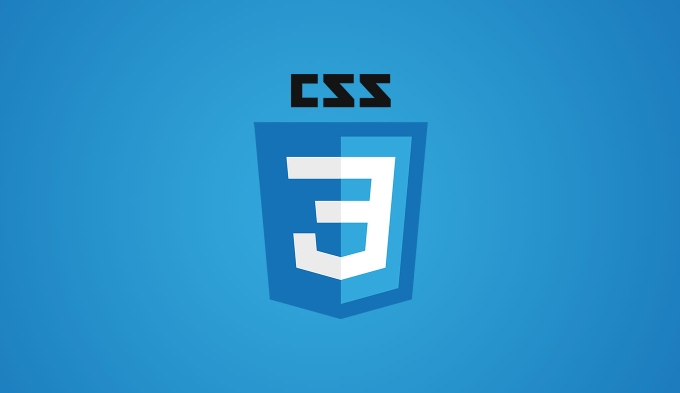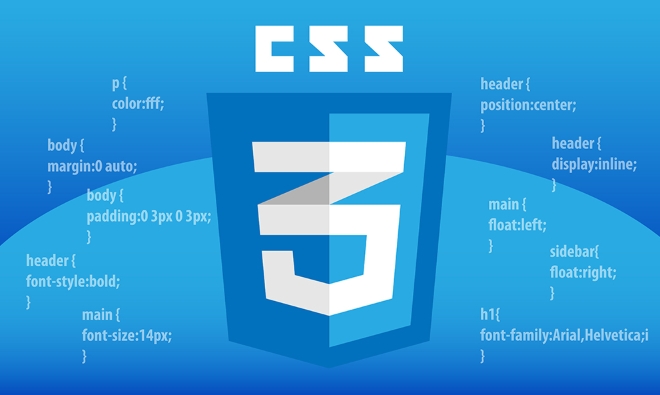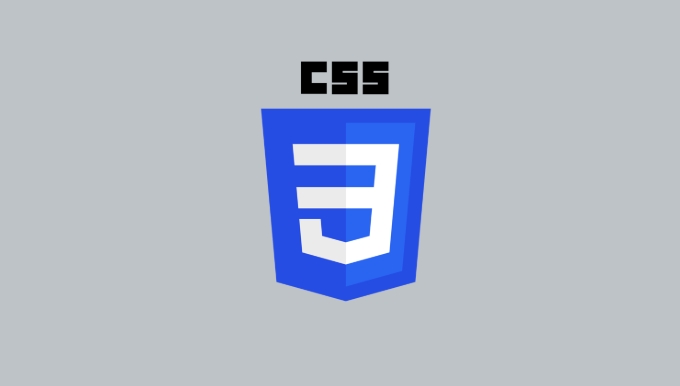Using CSS variables can effectively improve style maintainability. 1. By unifying the design of basic elements of the system, such as colors, fonts, etc., global calls and modifications are realized, such as defining --color-primary and reusing them in multiple components; 2. Component-level variables support local customization, such as setting independent margins and background colors for card components; 3. Dynamically switch variable values in combination with media query to achieve responsive design; 4. Good naming and organizational methods, such as semantic naming and module grouping, help team collaboration. Use CSS variables reasonably to make the project easier to maintain and expand.

It is a very practical way to use CSS to customize properties (variables) to improve maintainability. Especially when the project is getting bigger and the style is becoming more and more complex, the rational use of variables can reduce duplicate code, unify the style, and make it easier to adjust later.

The following is based on several common scenarios and talk about how to use CSS variables well to truly improve the maintainability of the project.

1. Unify the basic elements of the design system such as color and font
Many front-end projects have a set of design specifications, such as main tone, auxiliary colors, font size, spacing, etc. Writing these commonly used values as variables can be called uniformly throughout the project.
:root {
--color-primary: #007bff;
--font-size-base: 16px;
--spacing-unit: 1rem;
}Then use in the style:

.button {
background-color: var(--color-primary);
font-size: var(--font-size-base);
padding: var(--spacing-unit);
} The advantage of doing this is: changing a place will affect the overall situation . For example, to change the brand color, you only need to change --color-primary variable, and you don’t need to find color value replacement in each class.
2. Local customization of component-level variables
Although global variables are very useful, sometimes we want a component to have its own set of configurations, such as a special card component that requires different margins or background colors.
You can do this:
.card {
--card-padding: 1.5rem;
--card-bg: #f8f9fa;
padding: var(--card-padding);
background-color: var(--card-bg);
}This method makes the style logic inside the component clearer and facilitates reuse and modification. If you want to change the style of this card in the future, just change the variables in the component directly, without changing the specific style rules.
3. Implement responsive variable control in combination with media queries
In responsive design, we often change the font size, spacing, etc. according to different screen sizes. CSS variables can be used to dynamically switch values with media query.
:root {
--font-size-heading: 24px;
}
@media (min-width: 768px) {
:root {
--font-size-heading: 32px;
}
}Then use in the title style:
h1 {
font-size: var(--font-size-heading);
}This allows variable values to be automatically switched on different devices without having to rewrite a bunch of styles for each breakpoint. The logic is clearer and the structure is cleaner.
4. Pay attention to variable naming and organization
Variables are not just named casually. Good naming habits will make teamwork smoother. suggestion:
- Use semantic naming, such as
--color-primaryinstead of--blue - Grouped by module or function, such as
--btn-padding,--modal-bg - Manage global variables in a centralized file or code block
For example:
/* Theme color*/ --color-primary: #007bff; --color-success: #28a745; /* Font related*/ --font-size-base: 16px; --font-weight-bold: 700; /* Layout spacing*/ --spacing-sm: 0.5rem; --spacing-md: 1rem; --spacing-lg: 2rem;
This organization seems simple, but it is very practical in multi-person collaboration. Others can tell how to use it and where to modify it at a glance.
Use CSS variables not to show off skills, but to make the style more manageable and flexible. At the beginning, you may feel that writing a few more variables is troublesome, but once the project scale is increased, you will find that these small changes actually save a lot of effort to go back.
Basically that's it.
The above is the detailed content of Using css custom properties (variables) for maintainability. For more information, please follow other related articles on the PHP Chinese website!

Hot AI Tools

Undress AI Tool
Undress images for free

Undresser.AI Undress
AI-powered app for creating realistic nude photos

AI Clothes Remover
Online AI tool for removing clothes from photos.

Clothoff.io
AI clothes remover

Video Face Swap
Swap faces in any video effortlessly with our completely free AI face swap tool!

Hot Article

Hot Tools

Notepad++7.3.1
Easy-to-use and free code editor

SublimeText3 Chinese version
Chinese version, very easy to use

Zend Studio 13.0.1
Powerful PHP integrated development environment

Dreamweaver CS6
Visual web development tools

SublimeText3 Mac version
God-level code editing software (SublimeText3)

Hot Topics
 CSS tutorial for creating loading spinners and animations
Jul 07, 2025 am 12:07 AM
CSS tutorial for creating loading spinners and animations
Jul 07, 2025 am 12:07 AM
There are three ways to create a CSS loading rotator: 1. Use the basic rotator of borders to achieve simple animation through HTML and CSS; 2. Use a custom rotator of multiple points to achieve the jump effect through different delay times; 3. Add a rotator in the button and switch classes through JavaScript to display the loading status. Each approach emphasizes the importance of design details such as color, size, accessibility and performance optimization to enhance the user experience.
 Addressing CSS Browser Compatibility issues and prefixes
Jul 07, 2025 am 01:44 AM
Addressing CSS Browser Compatibility issues and prefixes
Jul 07, 2025 am 01:44 AM
To deal with CSS browser compatibility and prefix issues, you need to understand the differences in browser support and use vendor prefixes reasonably. 1. Understand common problems such as Flexbox and Grid support, position:sticky invalid, and animation performance is different; 2. Check CanIuse confirmation feature support status; 3. Correctly use -webkit-, -moz-, -ms-, -o- and other manufacturer prefixes; 4. It is recommended to use Autoprefixer to automatically add prefixes; 5. Install PostCSS and configure browserslist to specify the target browser; 6. Automatically handle compatibility during construction; 7. Modernizr detection features can be used for old projects; 8. No need to pursue consistency of all browsers,
 What is the difference between display: inline, display: block, and display: inline-block?
Jul 11, 2025 am 03:25 AM
What is the difference between display: inline, display: block, and display: inline-block?
Jul 11, 2025 am 03:25 AM
Themaindifferencesbetweendisplay:inline,block,andinline-blockinHTML/CSSarelayoutbehavior,spaceusage,andstylingcontrol.1.Inlineelementsflowwithtext,don’tstartonnewlines,ignorewidth/height,andonlyapplyhorizontalpadding/margins—idealforinlinetextstyling
 Styling visited links differently with CSS
Jul 11, 2025 am 03:26 AM
Styling visited links differently with CSS
Jul 11, 2025 am 03:26 AM
Setting the style of links you have visited can improve the user experience, especially in content-intensive websites to help users navigate better. 1. Use CSS's: visited pseudo-class to define the style of the visited link, such as color changes; 2. Note that the browser only allows modification of some attributes due to privacy restrictions; 3. The color selection should be coordinated with the overall style to avoid abruptness; 4. The mobile terminal may not display this effect, and it is recommended to combine it with other visual prompts such as icon auxiliary logos.
 Creating custom shapes with css clip-path
Jul 09, 2025 am 01:29 AM
Creating custom shapes with css clip-path
Jul 09, 2025 am 01:29 AM
Use the clip-path attribute of CSS to crop elements into custom shapes, such as triangles, circular notches, polygons, etc., without relying on pictures or SVGs. Its advantages include: 1. Supports a variety of basic shapes such as circle, ellipse, polygon, etc.; 2. Responsive adjustment and adaptable to mobile terminals; 3. Easy to animation, and can be combined with hover or JavaScript to achieve dynamic effects; 4. It does not affect the layout flow, and only crops the display area. Common usages are such as circular clip-path:circle (50pxatcenter) and triangle clip-path:polygon (50%0%, 100 0%, 0 0%). Notice
 What is the CSS Painting API?
Jul 04, 2025 am 02:16 AM
What is the CSS Painting API?
Jul 04, 2025 am 02:16 AM
TheCSSPaintingAPIenablesdynamicimagegenerationinCSSusingJavaScript.1.DeveloperscreateaPaintWorkletclasswithapaint()method.2.TheyregisteritviaregisterPaint().3.ThecustompaintfunctionisthenusedinCSSpropertieslikebackground-image.Thisallowsfordynamicvis
 How to create responsive images using CSS?
Jul 15, 2025 am 01:10 AM
How to create responsive images using CSS?
Jul 15, 2025 am 01:10 AM
To create responsive images using CSS, it can be mainly achieved through the following methods: 1. Use max-width:100% and height:auto to allow the image to adapt to the container width while maintaining the proportion; 2. Use HTML's srcset and sizes attributes to intelligently load the image sources adapted to different screens; 3. Use object-fit and object-position to control image cropping and focus display. Together, these methods ensure that the images are presented clearly and beautifully on different devices.
 What are common CSS browser inconsistencies?
Jul 26, 2025 am 07:04 AM
What are common CSS browser inconsistencies?
Jul 26, 2025 am 07:04 AM
Different browsers have differences in CSS parsing, resulting in inconsistent display effects, mainly including the default style difference, box model calculation method, Flexbox and Grid layout support level, and inconsistent behavior of certain CSS attributes. 1. The default style processing is inconsistent. The solution is to use CSSReset or Normalize.css to unify the initial style; 2. The box model calculation method of the old version of IE is different. It is recommended to use box-sizing:border-box in a unified manner; 3. Flexbox and Grid perform differently in edge cases or in old versions. More tests and use Autoprefixer; 4. Some CSS attribute behaviors are inconsistent. CanIuse must be consulted and downgraded.






